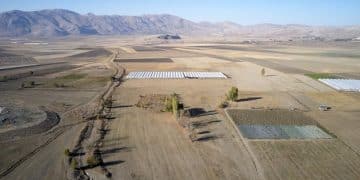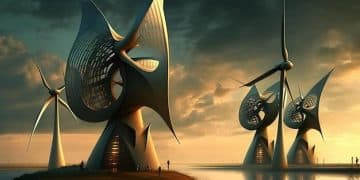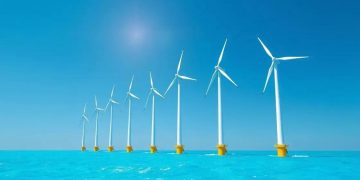Renewable energy adoption US: a must for future growth
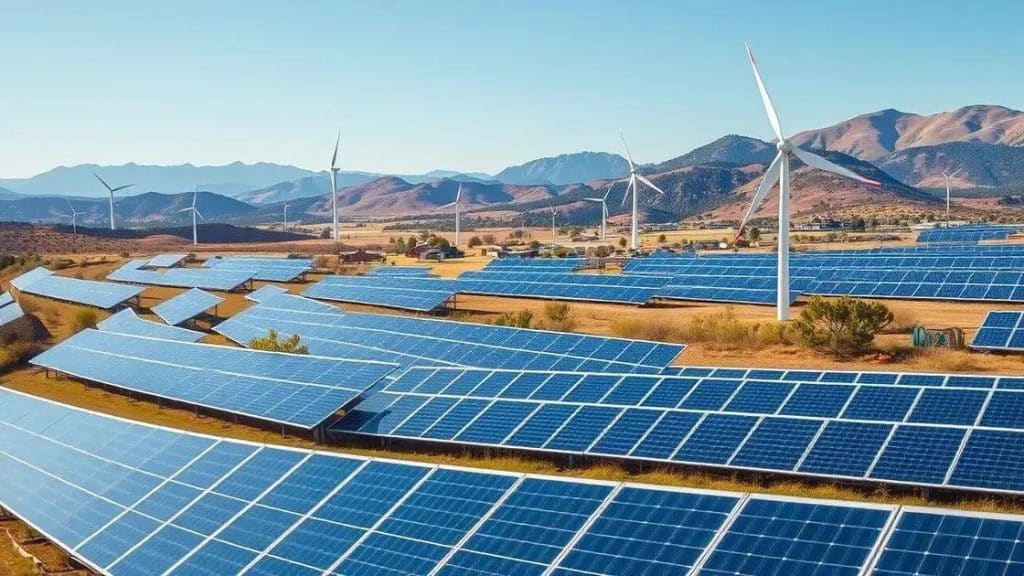
The adoption of renewable energy in the US significantly reduces carbon emissions, enhances energy security, and fosters economic growth through innovative technologies like solar and wind power.
Renewable energy adoption in the US is more than just a trend; it’s a necessary shift for a sustainable future. As we face climate change and energy security concerns, exploring how these sources can reshape our experience and economy becomes crucial. Let’s delve into this transformation.
Current state of renewable energy in the US
The current state of renewable energy in the US is evolving rapidly. As various technologies develop, the nation is making significant strides towards cleaner and more sustainable energy sources. The focus on reducing carbon emissions and enhancing energy security shapes the future of energy production.
Overview of Renewable Energy Sources
Renewable energy encompasses various sources that harness natural phenomena to generate electricity. Some prominent sources include:
- Solar Energy: Harnessed through solar panels, this energy source has seen vast installations across homes and businesses.
- Wind Energy: Wind turbines convert wind flow into usable electricity, becoming a significant contributor to green energy.
- Hydropower: Utilizing flowing water, hydropower plants generate substantial electricity for millions.
- Geothermal Energy: This type taps into heat from the Earth’s core, providing energy with a minimal environmental footprint.
The shift towards renewable energy is not merely an environmental concern; it also bolsters the economy. Jobs in the renewable sector are increasing, showing that clean energy can drive economic growth. Many companies are investing in green energy solutions, contributing to a more sustainable future.
Investment Trends
Investment in renewables is gaining momentum, with governments and private entities funneling billions into technologies. More states are establishing incentives encouraging homeowners and businesses to adopt renewable technologies. By doing so, they aim to reduce dependency on fossil fuels.
Despite these advancements, challenges remain. The integration of renewable energy into existing power grids must be carefully managed to ensure a stable power supply. As technology improves, solutions will likely emerge to address these issues, fostering a smoother transition.
Furthermore, public awareness and education play a crucial role in this transition. As communities learn about the benefits of renewable energy, support grows, driving market demand and policy changes.
In summary, the current state of renewable energy in the US reflects a dynamic movement towards sustainability, innovation, and economic opportunity. As advancements continue, the adoption and integration of renewable sources will reshape the nation’s energy landscape.
Benefits of adopting renewable energy
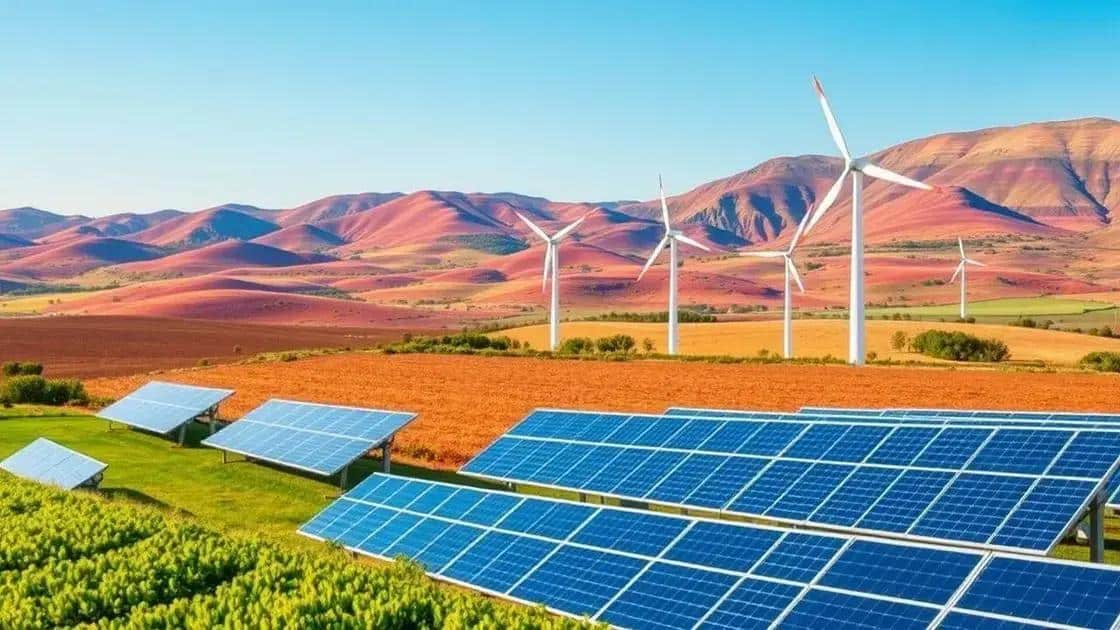
Adopting renewable energy offers numerous benefits that can transform our environment and economy. By shifting to cleaner energy sources, individuals and communities can experience significant advantages that enhance quality of life.
Environmental Benefits
One of the most compelling reasons to adopt renewable energy is its positive impact on the environment. These energy sources produce minimal pollution and reduce harmful greenhouse gas emissions. As a result, the air quality improves, leading to better health outcomes for the community.
- Reduction of Carbon Footprint: Using renewable energy reduces greenhouse gas emissions, which is critical in fighting climate change.
- Conservation of Natural Resources: Renewables do not deplete the Earth’s resources, unlike fossil fuels, ensuring long-term sustainability.
- Biodiversity Protection: Cleaner energy sources contribute to healthier ecosystems, providing habitats for various species.
Not only do renewables benefit the planet, but they also contribute to job creation and economic growth. The renewable energy sector is one of the fastest-growing job markets in the US, providing various employment opportunities in installation, maintenance, and manufacturing.
Economic Advantages
Switching to renewable energy can lead to significant cost savings in the long run. Although the initial investment can be higher for renewable technologies like solar panels, the savings on energy bills over time make them economically beneficial.
Moreover, many governments offer incentives and rebates for adopting renewable energy systems. This financial support helps offset the installation costs, making it easier for more people to switch.
In addition to individual savings, investing in renewable energy strengthens local economies. Communities that embrace clean energy can attract new businesses, leading to economic development and resilience.
Ultimately, the push towards renewable energy forms a crucial part of building sustainable systems. As communities transition to these energy sources, they not only improve their local environment but also contribute to a healthier planet.
Challenges in the transition to renewable sources
The transition to renewable energy sources comes with a unique set of challenges that need to be addressed. As the world shifts towards more sustainable practices, understanding these obstacles is key to successful implementation.
Intermittency and Reliability
One of the main challenges is the intermittency of renewable energy. Sources like solar and wind depend on natural conditions, which can vary significantly. This variability makes it difficult to ensure a stable and reliable power supply at all times.
- Energy Storage Solutions: Developing effective battery storage systems is crucial. These systems can store excess energy produced during peak times for use during shortages.
- Grid Integration: Integrating renewable sources into existing energy grids requires upgrades to infrastructure. Smart grids can efficiently manage the input from various sources.
- Balancing Supply and Demand: Advanced forecasting and energy management systems are necessary to match energy supply with demand.
Another significant challenge is the financial aspect of transitioning to renewable energy. Initial investments for technologies like wind turbines and solar panels can be high, which may deter widespread adoption. However, as technologies advance, costs continue to decrease, making renewables more accessible.
Regulatory Hurdles
Regulatory policies also play a crucial role in the adoption of renewable energy. Varied state and federal regulations can create confusion and impede progress. Governments need to establish clear and consistent policies that encourage investments in renewable technologies.
Moreover, resistance from established fossil fuel industries may pose a barrier. These entities often have significant economic and political power, which can slow down the transition process.
Public awareness and education are essential for overcoming these challenges. Many people may still be unaware of the benefits and potential of renewable energy. Increasing public support can pressure governments and industries to act in favor of cleaner energy sources.
In summary, while there are many challenges in the transition to renewable sources, addressing these issues through innovation, education, and supportive policies can facilitate a smoother shift towards a sustainable energy future.
Future trends in renewable energy technology

The future trends in renewable energy technology promise exciting developments that can reshape our energy landscape. As technology advances, new solutions emerge to address current challenges, making renewable sources more efficient and accessible for everyone.
Innovations in Solar Energy
Solar energy technology continues to evolve. With the introduction of new materials and designs, solar panels are becoming more efficient and versatile. Innovations like bifacial solar panels can capture sunlight from both sides, significantly increasing energy generation.
- Building-Integrated Photovoltaics: These solar panels are integrated into building materials, like windows and roofs, allowing structures to generate power while serving their primary purpose.
- Solar Tracking Systems: These systems adjust the angle of solar panels to directly face the sun, optimizing energy capture throughout the day.
Additionally, researchers are exploring new energy storage technologies to complement solar power. Improved battery systems are critical for storing excess energy, allowing users to rely on solar power even when the sun isn’t shining.
Advancements in Wind Energy
Wind energy technology is also advancing rapidly. Taller wind turbines and larger rotor blades are designed to capture more wind, increasing overall energy production. Offshore wind farms are becoming more common, utilizing high wind speeds over oceans to generate significant amounts of electricity.
Moreover, innovations in turbine design make them quieter and more efficient. This not only helps in reducing noise pollution but also enhances their placement in urban areas.
Another noteworthy trend is the digitalization of energy systems. Smart grids and IoT (Internet of Things) technologies are becoming integral to the energy landscape. These systems can monitor energy usage in real-time, optimize power distribution, and enhance responsiveness to changing demand patterns.
As renewable energy technology evolves, the focus also shifts to sustainability in manufacturing these technologies. Efforts are being made to reduce waste and utilize eco-friendly materials in the production of solar panels and wind turbines.
In conclusion, the future of renewable energy technology looks promising, with emerging trends driving efficiency and accessibility. As innovations continue to develop, cleaner energy solutions will become even more vital in our transition towards a sustainable future.
FAQ – Frequently Asked Questions about Renewable Energy Adoption
What is renewable energy?
Renewable energy comes from natural sources that are replenished over time, such as solar, wind, hydro, and geothermal energy.
What are the benefits of using renewable energy?
Renewable energy reduces carbon emissions, enhances air quality, creates jobs, and aids economic growth, contributing to a sustainable future.
What challenges does the transition to renewable energy face?
Challenges include the intermittency of sources like solar and wind, high initial costs, regulatory hurdles, and the need for infrastructure updates.
How is technology improving renewable energy solutions?
Innovations in solar panels and wind turbines, along with advancements in energy storage and smart grid technology, are making renewable solutions more efficient and reliable.

